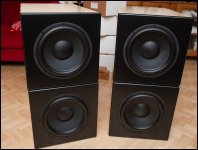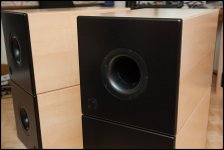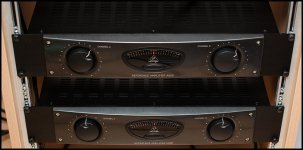Well done !
Makes me think of this: http://www.diyaudio.com/forums/multi-way/263353-portal-controlled-dispersion-tripole-4.html
-- unfortunately that project seems abandoned
And also this: http://www.diyaudio.com/forums/multi-way/90804-large-midrange-ob-scott-g-40.html#post1953221
Makes me think of this: http://www.diyaudio.com/forums/multi-way/263353-portal-controlled-dispersion-tripole-4.html
-- unfortunately that project seems abandoned
And also this: http://www.diyaudio.com/forums/multi-way/90804-large-midrange-ob-scott-g-40.html#post1953221
I'm a bit proud of the optimized alignment of prototype 7. It looks weird and chaotic, but there is a system behind it.
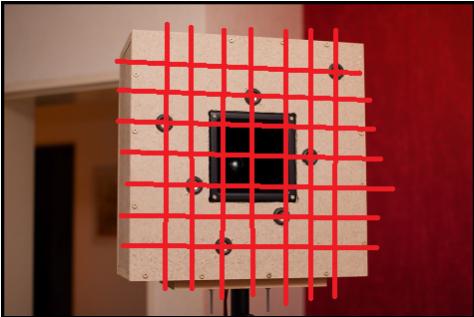
I thought that element arrangement was my idea
post #3352 www.diyaudio.com/forums/multi-way/1...r-coupled-up-firing-speakers.html#post4198898
http://en.wikipedia.org/wiki/Costas_array
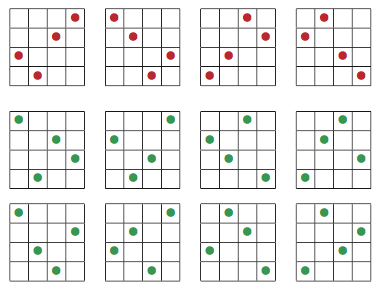
Anyway, allways delighted to see solutions outside mainstream.
.
How are you planning to integrate it into your room? e.g. Will you hang/mount it to a wall?
I'm planning to put the speaker on stands. Unfortunately the final design is on hold, because I have to finish my home theater first.
I thought that element arrangement was my idea
post #3352 www.diyaudio.com/forums/multi-way/1...r-coupled-up-firing-speakers.html#post4198898
Damn! You were faster!

Interesting. I didn't know about Costas arrays. It is exactly the principle I used for prototype 7. I just didn' know that this has been named to a person already.
Finally I built my speakers for my new stereo setup. I was able to shape horizontal and vertical directivity independently from each other. The speaker is a 3-way design with four DSP channels. And it was designed to be used with a subwoofer system which will follow.
Here it is:
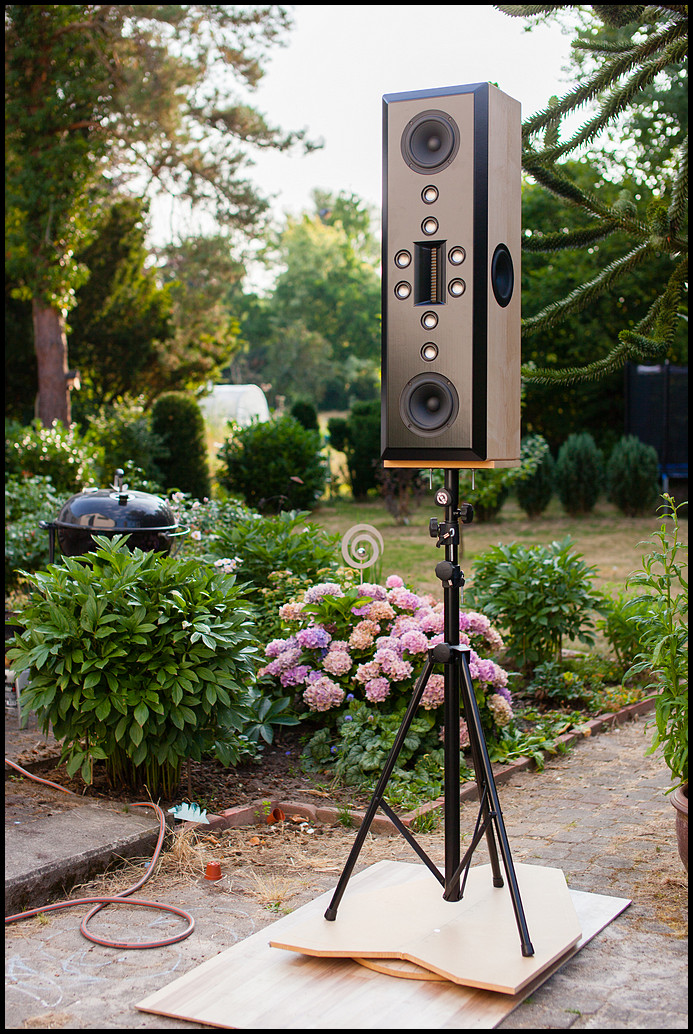
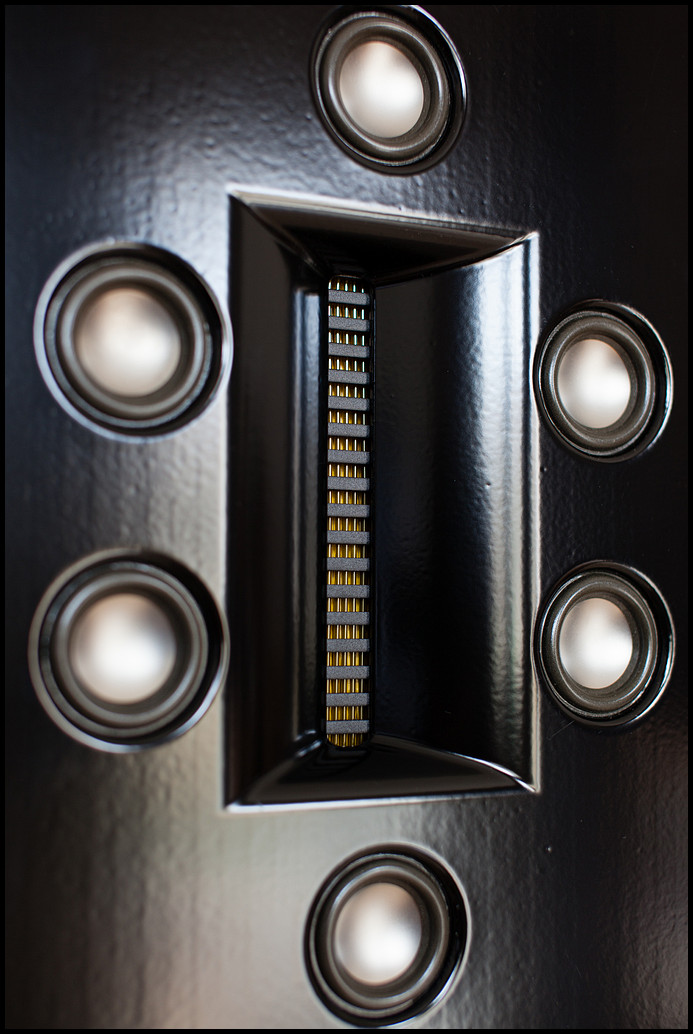
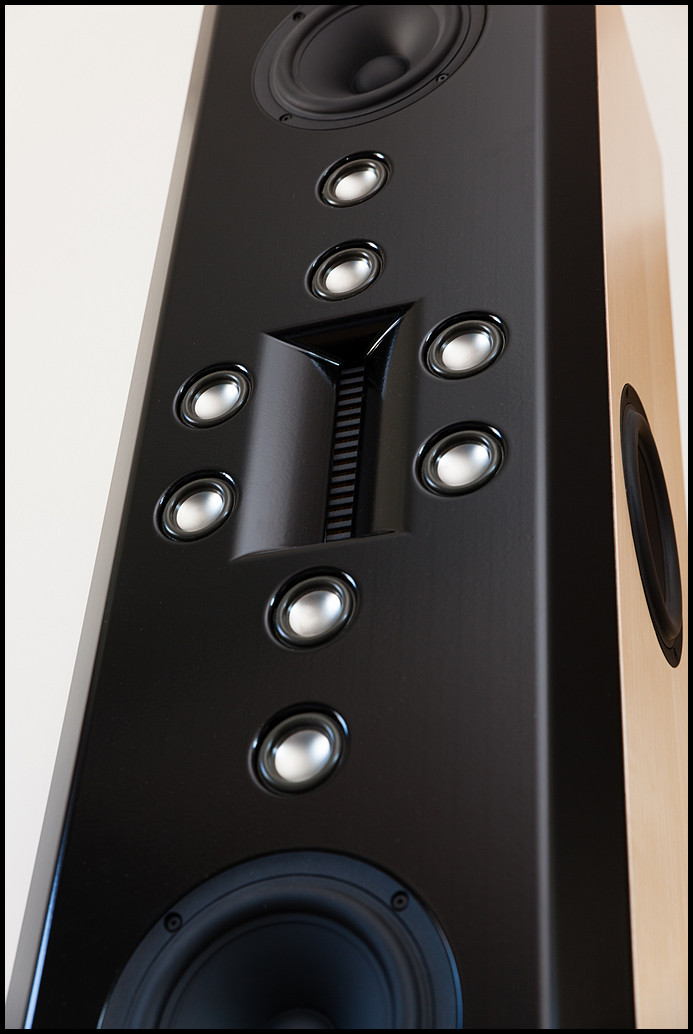
Horizontal directivity:
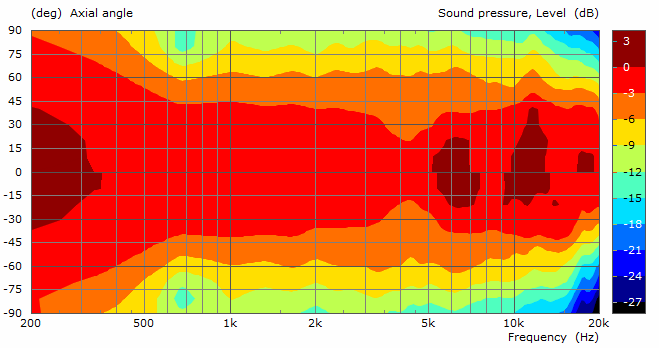
Vertical directivity:
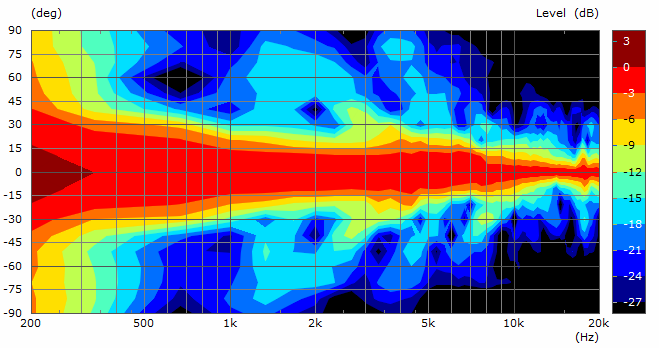
Please read the full Quasikoax 1 documentation. It is in german so you may use a translator.
Here it is:
Horizontal directivity:
Vertical directivity:
Please read the full Quasikoax 1 documentation. It is in german so you may use a translator.
Attachments
Finally I built my speakers for my new stereo setup. I was able to shape horizontal and vertical directivity independently from each other. The speaker is a 3-way design with four DSP channels. And it was designed to be used with a subwoofer system which will follow.
These look really good. Congratulations on the impressive build! Maybe you should update the first post of this thread with some new info, if you can.
It looks like you've achieved the type of vertical directivity I've been advocating for. It takes a lot to substantially attenuate the floor and ceiling reflections. Do you have any subjective assessments yet? In what ways do these sound similar to other speakers, and in what ways are they different?
Have you found them to be very tolerant of room placement? I'm particularly interested in the distance required from the front wall (wall behind the speakers).
Since you achieve directivity to a nice low frequency (significantly below 1000 hz), I wonder if the missing low frequency reflected energy might leave the speaker sounding a little thin. I think studies show that most people prefer a gradual, steady roll off of acoustic energy with frequency at their listening positions. (Something like a 6 or 10 dB drop from a couple hundred Hz up to the limit of human hearing). I guess what I'm saying is that I wouldn't be surprised to hear that you prefer an EQ that isn't flat. If the reflections aren't reinforcing the low frequencies, you might want to amplify them yourself. Still, I think you'll preserve more detail/clarity this way than relying on the reflections. You can have the frequency response you want, without the reflections that can reduce the clarity. Like having your cake and eating it, too.
Thanks for sharing. I'm interested to hear more.
Nice!
Really like how the design limits vertical dispersion while allowing 60 degrees of horizontal. Your woodworking skills just prove I'm a hack that should never go beyond birdhouses and Ikea builds.
Great attention to detail all around from the build quality, the design and selection of the proper drivers to really nail it. If they ever become too large or you move on, I have a warm place to store them.
Really like how the design limits vertical dispersion while allowing 60 degrees of horizontal. Your woodworking skills just prove I'm a hack that should never go beyond birdhouses and Ikea builds.
Great attention to detail all around from the build quality, the design and selection of the proper drivers to really nail it. If they ever become too large or you move on, I have a warm place to store them.
So it looks like you're using DSP delay on the side drivers to extend the beamwidth control down to 500Hz? (I'm too lazy to translate the PDF yet)
Yes. But it the side woofers are not inverted or delayed like in a cardioid system. Instead the other drivers are delayed so that the side woofers interfere constructive and create directivity only because of their distance to each other.
Of course it has its limitations. Under 500 Hz the speaker radiates uniform in all directions. But the advantage is that there is no loss in maximum SPL in the lower frfequencies compared to a cardioid.
Some random observations about this speaker here : Combating Pattern Flip
The new subwoofer system is ready to play. I built four vented subwoofers which are configured in a DBA configuration. The room is not perfect for a DBA, but it works better than expected. So decay is greatly reduced in the bass region.
I use Scan Speak 30W/4558T00. The port is tuned at 26 Hz. I use linear phase FIR filters to cross them at 80 Hz with 96 dB/Okt. And the filter equalizes the phase of the bandpass. So the whole system is linear phase.
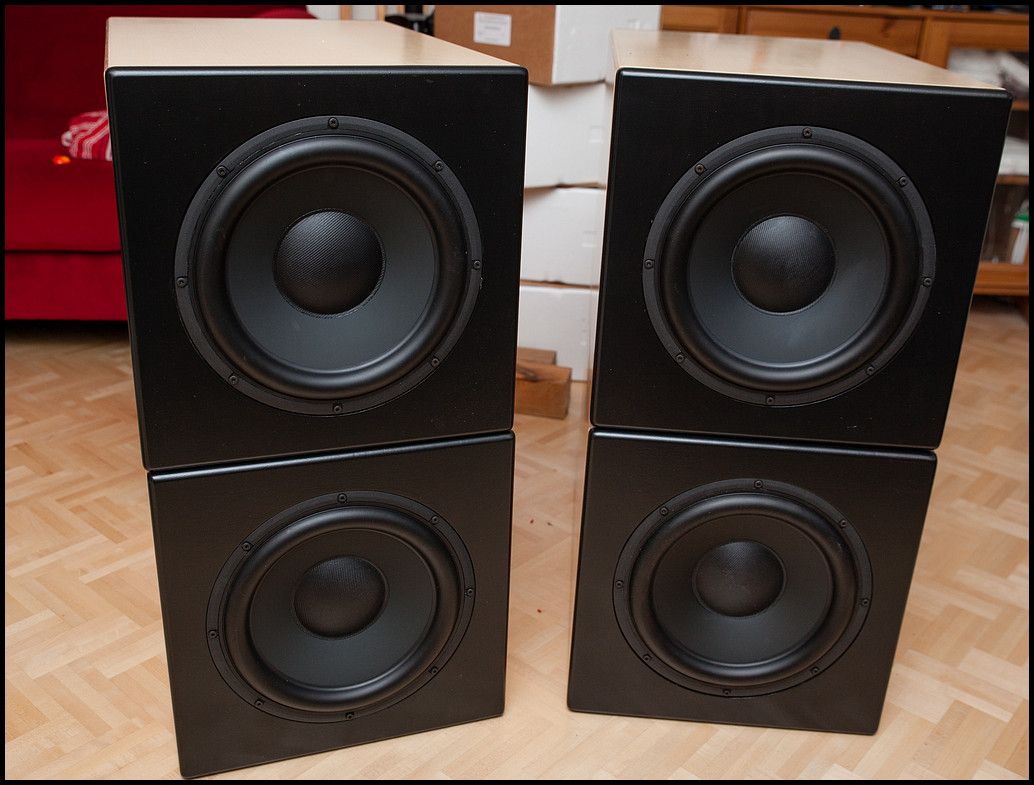
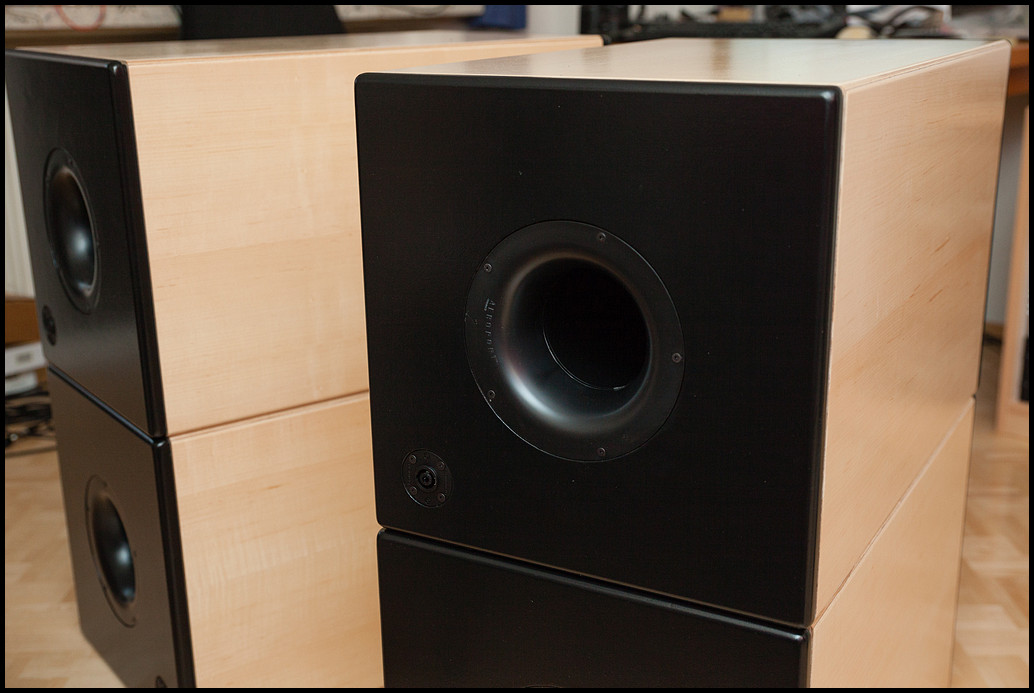
The electrical power comes from two Behringer A800. Each driver has its own channel.
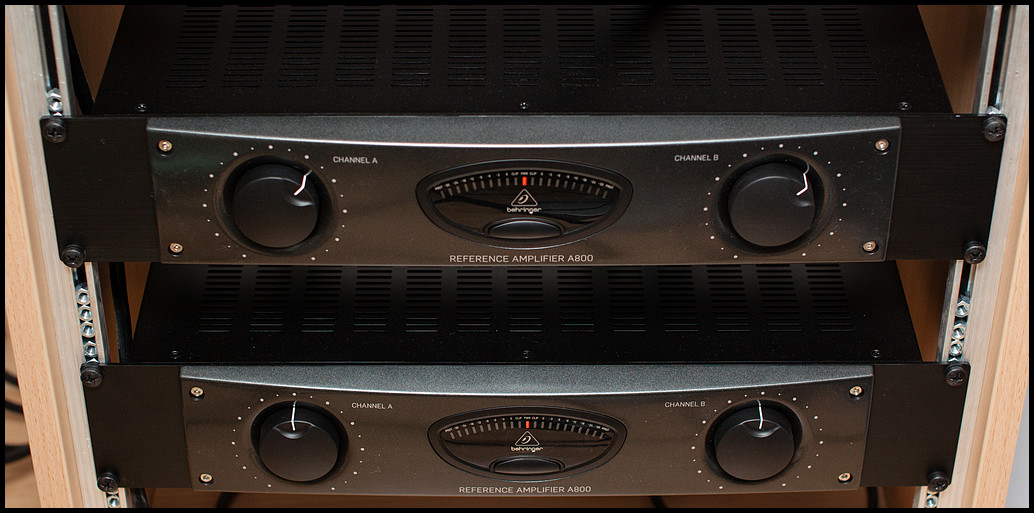
For my living room (26 m²) the maximum SPL of the system is high enough. You never get the feeling that you cranked up the volume too high.
I use Scan Speak 30W/4558T00. The port is tuned at 26 Hz. I use linear phase FIR filters to cross them at 80 Hz with 96 dB/Okt. And the filter equalizes the phase of the bandpass. So the whole system is linear phase.
The electrical power comes from two Behringer A800. Each driver has its own channel.
For my living room (26 m²) the maximum SPL of the system is high enough. You never get the feeling that you cranked up the volume too high.
Attachments
Last edited:
Do you notice any difference at all with the FIR filter compared to something i.e. a 4th order LR IIR filter?I use linear phase FIR filters to cross them at 80 Hz with 96 dB/Okt. And the filter equalizes the phase of the bandpass. So the whole system is linear phase.
Last edited:
Hi Nils,
I bumped into this design and it looks really good (just like some of your previous projects I've seen on the internet).
I'm curious, how did you implement the linear phase Horbach/Keele filters?
If I'm not mistaken e.g. Acourate Convolver could be used, but I'm guessing one would need a full-blowen computer with a good multichannel audio interface to make it work?
I bumped into this design and it looks really good (just like some of your previous projects I've seen on the internet).
I'm curious, how did you implement the linear phase Horbach/Keele filters?
If I'm not mistaken e.g. Acourate Convolver could be used, but I'm guessing one would need a full-blowen computer with a good multichannel audio interface to make it work?
I'm curious, how did you implement the linear phase Horbach/Keele filters?
I used rePhase to generate the impulse resonses. The convolving is done by a mini PC using BruteFIR under Linux. The audio interface is a Asus Xonar Essence STD II 7.1. The PC is optimized to be used headlessly. I can stream to it via UPnP using MPD. Volume is controlled digitally with 64 Bit precision.
I needed a few month to implement and configure all the things. It boots in around 15 seconds runs absolutely stable.
- Home
- Loudspeakers
- Multi-Way
- Pseudo-coaxial with narrow directivity (and Horbach-Keele filters)
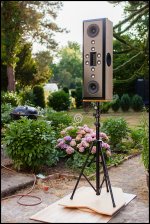
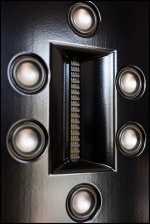
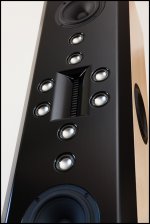
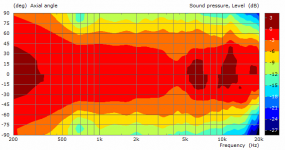
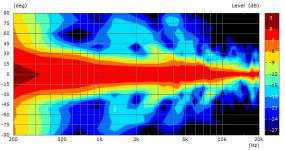
 The finished product is quite a departure from where the thread started. Not just how they look, but in form and function, too. You seem to have solved the different axis directivity that you sought.
The finished product is quite a departure from where the thread started. Not just how they look, but in form and function, too. You seem to have solved the different axis directivity that you sought.